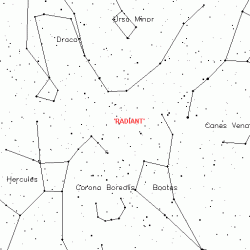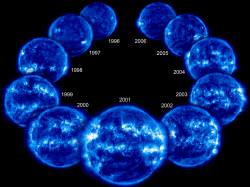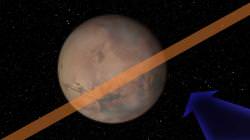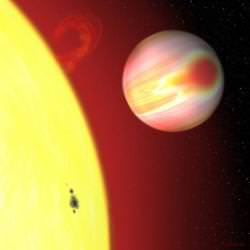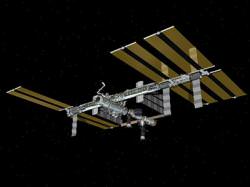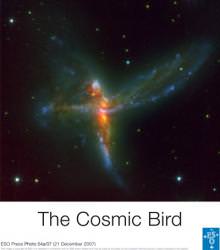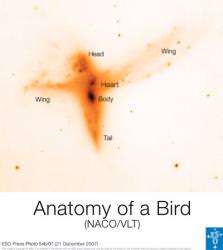Dec. 28, 2007: Earlier this year, NASA researcher Dan Irwin stepped off a plane in Guatemala and found, to his surprise, that he was running for mayor. It seems the people of San Andres had put his name on the ballot.
Irwin respectfully declined, but he was touched. If you ask him why the residents of rural San Andres are crazy about him, Irwin, a humble soul, shrugs his shoulders and says, "Everyone has a hobby. Mine is building things – helping develop their community. I enjoy it."
 Irwin is a pioneer of SERVIR (Spanish for "to serve"), a high-tech satellite visualization system that monitors the environment of Central America. It helps track and combat wildfire, improves land use and agricultural practices, and helps local officials respond faster to natural disasters.
Irwin is a pioneer of SERVIR (Spanish for "to serve"), a high-tech satellite visualization system that monitors the environment of Central America. It helps track and combat wildfire, improves land use and agricultural practices, and helps local officials respond faster to natural disasters.
Right: During a recent visit to Central America, Dan Irwin explains the inner workings of SERVIR to NASA Deputy Administrator Shana Dale. [more]
Developing SERVIR was a full-time job for Alabama-resident Irwin, including many months on assignment in Central America. What do you do in your spare time so far from home? With the help of community residents, Irwin built a playground and a library in San Andres. "I worked on the projects before and after work and on weekends," says Irwin, "just as other people spend time on their hobbies at those times."
But it is Irwin's "real" work with SERVIR that makes contributions reaching far beyond the community level to the whole of Central America."SERVIR has brought together a lot of different people from a lot of different backgrounds to create the kind of team needed to help solve very complex issues and provide potentially life-saving solutions to local decision makers and stakeholders," says John Horack of NASA's Marshall Space Flight Center (MSFC) where SERVIR technology is developed and tested.
SERVIR's supercomputer at the Water Center for the Humid Tropics of Latin America and the Caribbean (CATHALAC) in Panama City integrates data from a variety of sources and displays a real-time map of crisis points. At a glance, decisions-makers can see where rain will fall, where flooding will occur, the location of forest fires, hurricanes, tornadoes – pretty much anything nature can dish out. CATHALAC then warns residents.
Above: SERVIR brings high-tech satellite imagery and visualization tools to bear on Central America. Current maps of fire, floods and severe weather may be found on the bilingual SERVIR web site: http://servir.net.
SERVIR also takes a global approach to environmental challenges by supporting the ten-year plan for implementation of the Global Earth Observation System of Systems, or GEOSS, which was adopted by the European Commission and over 70 governments worldwide.
GEOSS's main purpose is to foster cooperation and integration among countries by pooling Earth observation tools and data for the benefit of all. Because of SERVIR's positive impact in Central America, GEOSS recently adopted SERVIR as their template--a sort of "poster child" for how to meet GEOSS goals. At the organization's recent Ministerial Summit in Cape Town, South Africa, which was attended by over 70 nations and over 50 international organizations, SERVIR was recognized as a "GEOSS Early Achievement."
What's the secret to SERVIR's success? It's not "what" but "who" – namely, Irwin and what he calls the "dream team."

Above: The SERVIR "dream team." [Larger image]
These behind-the-scene "wizards" include administrators, scientists, and technicians like, at CATHALAC, Director Emilio Sempris, Emil Cherrington, and Francisco Delgado; and, at NASA's Marshall Space Flight Center, Burgess Howell, Robert Griffin, and Jason Arnold.
The CATHALAC team members are in charge of day-to-day on-site operations: gathering and processing the satellite data, combining it with ground observations, and getting the results quickly into the hands of national environmental management and disaster response leaders. Team members at the MSFC test-bed facility view SERVIR data at the same time as their Central American counterparts view it and play key roles in supporting and coordinating SERVIR projects.
"I'm involved at several different levels within SERVIR," says team member Griffin. "I help coordinate among institutions in a country as well as with SERVIR and its partners in the U.S. and abroad. As with everyone involved with these projects, I help create products to solve problems in the event of a natural disaster."
 All of the SERVIR team members will help achieve the next important step -- geographic expansion. NASA is extending SERVIR's life-saving benefits to Africa and the Caribbean. SERVIR’s flexibility and adaptability make it perfect for meeting the new challenges of these geographic areas, helping NASA and its partners bring global technology to the grass roots level.
All of the SERVIR team members will help achieve the next important step -- geographic expansion. NASA is extending SERVIR's life-saving benefits to Africa and the Caribbean. SERVIR’s flexibility and adaptability make it perfect for meeting the new challenges of these geographic areas, helping NASA and its partners bring global technology to the grass roots level.
Right: A SERVIR "test bed node" at the National Space Science and Technology Center in Huntsville, AL. [Larger image]
"This is an extremely exciting time to be a part of this project," says Griffin. "Right now, I'm working to deploy SERVIR in the Dominican Republic. Most recently we brought together radar imagery and other information to help the Dominican Republic's government respond to extensive flooding in the wake of Tropical Storm Noel."
Says Irwin of Griffin and other members of the team, "all of these people are indispensable to all that we've done and will continue to do. Without them, it would be impossible."
It's no wonder that Irwin reveres the SERVIR team, and that many Central Americans revere Dan Irwin.




